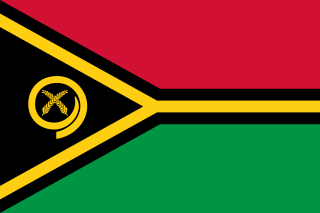
The Pacific geoduck is a species of very large, edible saltwater clam in the family Hiatellidae. The common name is derived from a Lushootseed (Nisqually) word gʷídəq.

Whiteleg shrimp, also known as Pacific white shrimp or king prawn, is a variety of prawn of the eastern Pacific Ocean commonly caught or farmed for food.

A freshwater prawn farm is an aquaculture business designed to raise and produce freshwater prawns or shrimp for human consumption. Freshwater prawn farming shares many characteristics with, and many of the same problems as, marine shrimp farming. Unique problems are introduced by the developmental life cycle of the main species.

Shrimp farming is an aquaculture business that exists in either a marine or freshwater environment, producing shrimp or prawns for human consumption.

Macrobrachium rosenbergii, also known as the giant river prawn or giant freshwater prawn, is a commercially important species of palaemonid freshwater prawn. It is found throughout the tropical and subtropical areas of the Indo-Pacific region, from India to Southeast Asia and Northern Australia. The giant freshwater prawn has also been introduced to parts of Africa, Thailand, China, Japan, New Zealand, the Americas and the Caribbean. It is one of the biggest freshwater prawns in the world and is widely cultivated in several countries for food. While M. rosenbergii is considered a freshwater species, the larval stage of the animal depends on brackish water. Once the individual shrimp has grown beyond the planktonic stage and becomes a juvenile, it will live entirely in freshwater.

Penaeus monodon, commonly known as the giant tiger prawn or Asian tiger shrimp, is a marine crustacean that is widely reared for food.
Cryphiops caementarius is a South American freshwater shrimp.

The southern giant clam, Tridacna derasa, is a species of extremely large marine clam in the cockle family, Cardiidae.

Venerupis philippinarum is an edible species of saltwater clam in the family Veneridae, the Venus clams.

China, with one-fifth of the world's population, accounts for one-third of the world's reported fish production and two-thirds of the worlds reported aquaculture production.

As with other countries, the 200 nautical miles (370 km) exclusive economic zone (EEZ) off the coast of the United States gives its fishing industry special fishing rights. It covers 11.4 million square kilometres, which is the largest zone in the world, exceeding the land area of the United States.

Aquaculture started to take off in New Zealand in the 1980s. It is dominated by mussels, oysters and salmon. In 2007, aquaculture generated about NZ$360 million in sales on an area of 7,700 hectares. $240 million was earned in exports.
Aquaculture in the Marshall Islands is governed by the Marshall Islands Marine Resources Authority. A hatchery for giant clams has been established by the national government in Likiep Atoll, and at least one other clam farm is in operation in Mili Atoll. At the CSD-16 Partnerships Fair in 2008, Erik Hagberg suggested that Holothuroidea cultivation is a viable option for developing aquaculture in the country.
Aquaculture in Tuvalu generally centers on milkfish and clams. The first pond in Tuvalu purposely built to sustain aquaculture was completed in 1996 on Vaitupu. The construction of this 1560-square-metre pond was funded under the FAO Regional South Pacific Aquaculture Development Project.
Aquaculture in Alaska is dominated by the production of shellfish and aquatic plants. These include Pacific oysters, blue mussels, littleneck clams, scallops, and bull kelp. Finfish farming has been prohibited in Alaska by the 16.40.210 Alaskan statute, however non-profit mariculture continues to provide a steady supply of aquaculture in the state. Many organizations that helped the ban, now encourage the growing of shellfish and other oysters.

Tectus niloticus, common name the commercial top shell, is a species of sea snail, a marine gastropod mollusk in the family Tegulidae.

Fishery and fishing industry plays a significant part in the national economy of Pakistan. With a coastline of about 814 km, Pakistan has enough fishery resources that remain to be developed. Most of the population of the coastal areas of Sindh and Balochistan depends on fisheries for livelihood. It is also a major source of export earning.

Geoduck aquaculture or geoduck farming is the practice of cultivating geoducks for human consumption. The geoduck is a large edible saltwater clam, a marine bivalve mollusk, that is native to the Pacific Northwest.

Fishing is important to the national economy of Vanuatu. It is the main source of income for many in the islands and Vanuatu's biggest export. According to 2009 figures, approximately 77% of households in Vanuatu are involved in fishing activity. According to 2005 figures, Vanuatu caught 151,080 fish in that year, with frozen fish accounted for half of Vanuatu's commodity exports.
ICAR - Central Institute of Fisheries Education, Rohtak also called as ICAR-CIFE Rohtak is one of the regional research and education campus of the Central Institute of Fisheries Education (CIFE), which is a Deemed to be University and institution of higher learning for fisheries science.

















